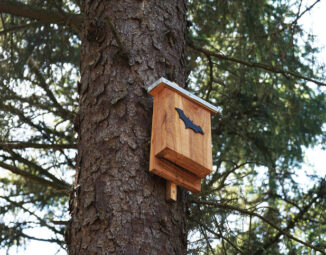Water, Water, Everywhere? EPA and USACE Issue New, Broader Clean Water Act Rule
During the past two years, the half-century-old Clean Water Act (“CWA”) has become a hot topic, with controversies over its interpretation coming to a boil throughout the end of last year into the beginning of this one. If a new final rule interpreting the CWA proposed by the Biden administration goes into effect, it would place more waters under federal protection and thus increase the number of permits developers, farmers, and other industries must obtain in order to operate near those waters.
The central question is the definition of the phrase “waters of the United States” – or “WOTUS” – as used in the CWA.[1] A final determination of the definition of WOTUS will significantly impact infrastructure projects, agriculture, real estate, and other industries, as this definition determines the scope of the CWA’s two major permitting programs: Section 402 of the CWA,[2] governing National Pollutant Discharge Elimination System permits; and Section 404(a) of the CWA,[3] regulating the discharge of dredged or fill material into navigable waters. Industry groups have expressed concern that this proliferation of permit burdens and barriers is contrary to investments in development projects like infrastructure and green energy ventures that have been hallmarks of the Biden administration.
Back in January 2022, the United States Supreme Court decided to weigh in on how federal courts and agencies should determine whether a body of water is subject to the CWA’s jurisdiction. In October 2022, the Supreme Court heard oral arguments in the case of Sackett v. Environmental Protection Agency, an appeal from the Ninth Circuit, originally brought by Idaho landowners. The key question in the case is whether the Circuit Court used the correct test when deciding whether certain wetland are regulated by the CWA.
However, in one of its final actions of 2022, the Biden administration tried to get ahead of the issue (instead of waiting until after the Supreme Court had ruled on Sackett) by entering a final rule defining the scope of the CWA, which, in turn, could influence the Supreme Court justices and give federal agencies greater flexibility once the high court enters its decision. In a letter to the court, the Environmental Protection Agency (“EPA”) and the United States Army Corps of Engineers (“USACE”) stated that this final rule could answer several questions posed by the justices, including Justice Elena Kagan’s inquiry into whether there would be guidance about which adjacent wetlands qualify as WOTUS.
On December 30th, the EPA and the USACE jointly announced that they would replace a Trump-era rule that narrowed the scope of the federal government’s CWA jurisdiction with a broader interpretation, corresponding to one that existed prior to 2015. In January 2023, the agencies released a 141-page updated rule revising the definition of WOTUS.
Briefly, the agencies will construe WOTUS to mean:
- traditional navigable waters, territorial seas, and interstate waters;
- impoundments of “waters of the United States,” which are created by discrete structures (often human-built) like dams or levees that typically have the effect of raising the water surface elevation, creating or expanding the area of open water, or both;
- tributaries to traditional navigable waters, territorial seas, interstate waters, or impoundments when the tributaries meet either the relatively permanent standard or the significant nexus standard;
- wetlands adjacent to traditional navigable waters, territorial seas, and interstate waters; wetlands adjacent to and with a continuous surface connection to relatively permanent impoundments or jurisdictional tributaries; and wetlands adjacent to impoundments or jurisdictional tributaries, when the wetlands meet the “significant nexus standard”;
- intrastate lakes and ponds, streams, or wetlands not identified in the above paragraphs that meet either the relatively permanent standard or the significant nexus standard.
The “significant nexus standard” is the principle that to constitute “navigable waters” under the CWA, a water or wetland must possess a “significant nexus” to waters that are or were navigable in fact or that could reasonably be made so. For example, wetlands possess the requisite significant nexus if the wetlands, either alone or in combination with similarly situated wetlands in the region, significantly affect the chemical, physical, and biological integrity of other waters that are clearly “navigable.”
The new rule explicitly states that “[t]he agencies have the discretion to consider defining waters as jurisdictional on . . . a case-specific, fact based approach[.]” This case-by-case, fact-intensive test can result in delays for developers and regulated entities, higher costs, and more unpredictability in the permitting process.
The new rule was intended to take effect sixty (60) days after publishing. Nevertheless, on the same day that the EPA and USACE published this new rule, the State of Texas and several industry groups, led by the American Farm Bureau Federation and the American Petroleum Institute (“API”), filed lawsuits challenging the rule, alleging that the rule illegally expands the EPA’s and USACE’s authority to regulate beyond what Congress intended in the CWA. Texas alleged that it had the right to regulate – or elect not to regulate – waters within its own borders and that the federal government agencies’ interpretation of federal law was inappropriately expansive.
In a press release, the Texas Attorney General stated: “I’m proud to file this lawsuit challenging Biden’s WOTUS rule and remain committed to pushing back against the Biden Administration’s radical climate agenda.”
Both the Texas suit and the private litigation ask the court to block the implementation of the new rule. The Commonwealth of Kentucky also later filed a similar suit.
Changes to the definition of “WOTUS” can significantly impact permitting and project development by regulated entities. Until the meaning of WOTUS is confirmed, environmental advocates, project developers, and regulators all remain in limbo.
Additionally, the new rule defining WOTUS is not the only legal issue impacting the CWA. As Legal Developers reported last year, a federal judge in California annulled an EPA rule created in 2020 under the Trump administration that removed power from state and tribal authorities to block the approval of certain permits and thereby restrict new development under the CWA (“2020 Rule”). For instance, the 2020 Rule facilitated the construction of pipelines and hydroelectric dams. When the federal judge threw out the 2020 Rule, he allowed state and tribal authorities to have a wider amount of say in the permitting process. Nonetheless, in February 2023, a Ninth Circuit appellate panel restored the 2020 Rule limiting the power of states and tribes. The 2020 Rule had previously been temporarily restored by the United States Supreme Court, pending the outcome of this appeal before the Ninth Circuit. The reinstatement of the Trump-era rule allows for less restricted development, and its restoration was supported by API, the Interstate Natural Gas Association of America, the National Hydropower Association, and the States of Arkansas, Louisiana, Mississippi, Missouri, Montana, West Virginia, Wyoming, and Texas. The State of New Jersey was amongst the states opposing the return of the rule.
The attorneys at Obermayer will continue to keep our developer clients abreast of these issues and any other changes to the Clean Water Act.
[1] Congress did not define WOTUS in the CWA itself.
[2] 33 U.S.C. § 1342.
[3] Id. § 1344(a).
ETA: The aforementioned lawsuit initiated by Texas has been resolved in favor of the State. A judge in the United States District Court for the Southern District of Texas granted a preliminary injunction that blocked implementation of the Biden administration rule defining the scope of the CWA in Texas and Idaho, concluding that the states are likely to win on the merits. The District Court found that federal jurisdiction should not extend to “nontraditional waters” unless the water “either alone or in combination with similarly situated lands in the region, significantly affects the chemical, physical, and biological integrity of other covered waters more readily understood as ‘navigable.’” However, the court did not implement the nationwide injunction that was sought by industry groups. Outside of those two states, the EPA and USACE’s WOTUS rule went into effect on Monday, March 20, 2023.
The information contained in this publication should not be construed as legal advice, is not a substitute for legal counsel, and should not be relied on as such. For legal advice or answers to specific questions, please contact one of our attorneys.





